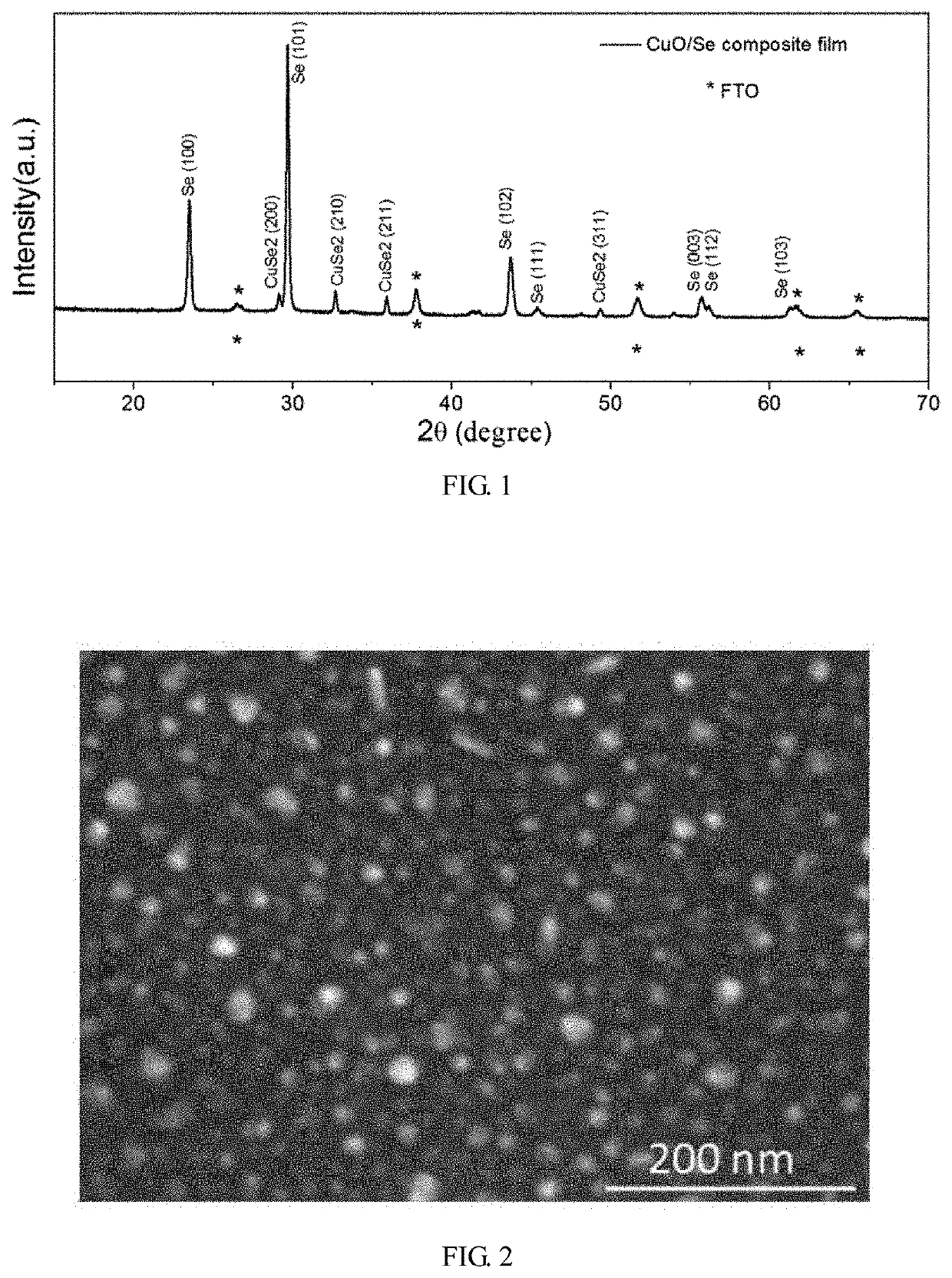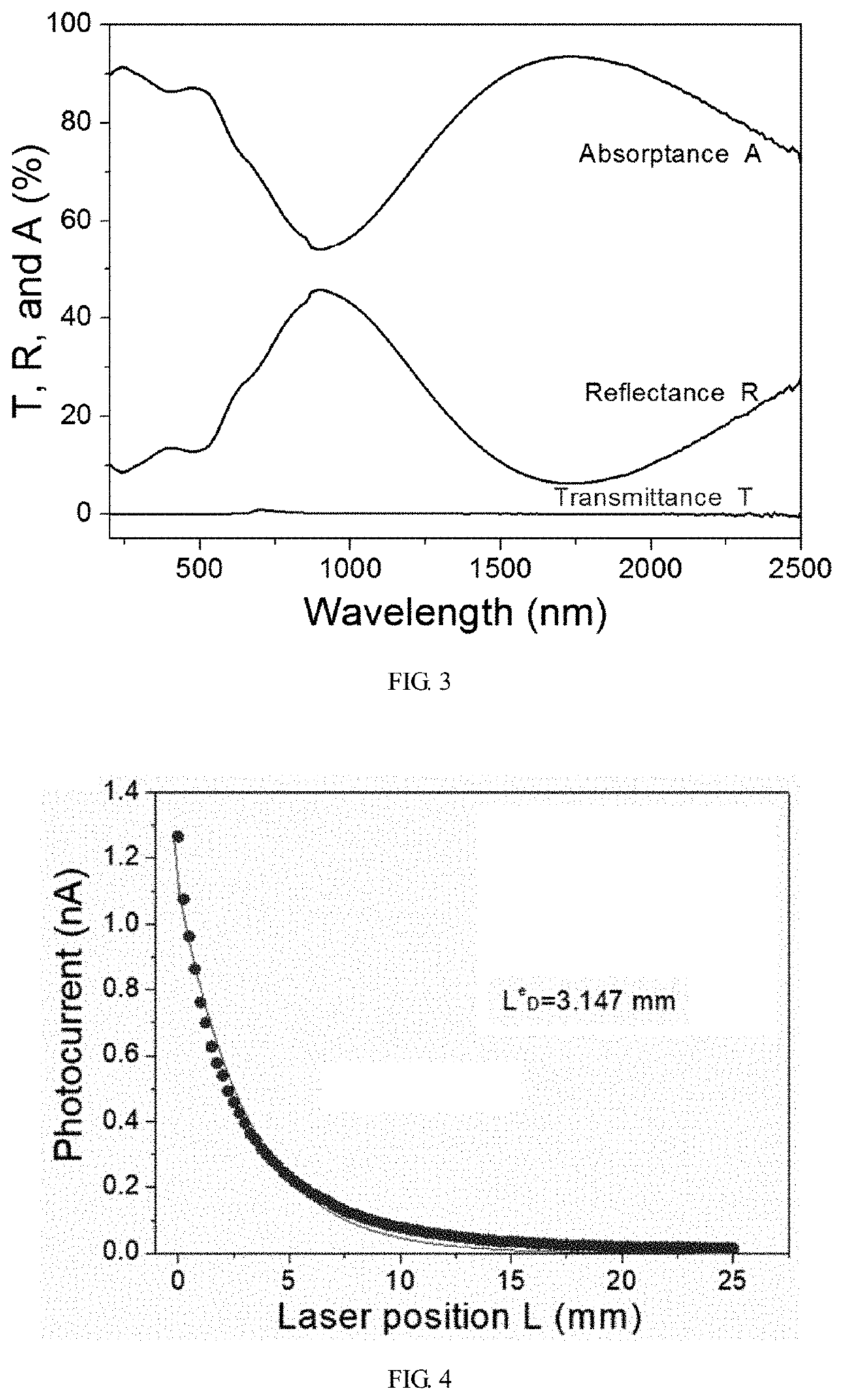CuO/Se COMPOSITE FILM
a composite film and cuo technology, applied in the field of semiconductor materials, can solve the problems of severe carrier recombination, inability to prepare by vacuum thermal evaporation method, and inability to improve the crystallinity of cuo, so as to reduce the defect rate, and eliminate or reduce the defect of the cuo film
- Summary
- Abstract
- Description
- Claims
- Application Information
AI Technical Summary
Benefits of technology
Problems solved by technology
Method used
Image
Examples
example 1
[0022]An ordinary glass substrate was cleaned sequentially in acetone, ethanol and deionized water under ultrasonication for 10 min, dried with nitrogen and then placed in a magnetron sputtering deposition chamber. The deposition chamber was vacuumed to 2×10−4 Pa using a mechanical pump and a turbomolecular pump, and a distance between the glass substrate and a target material was adjusted to 6 cm. Then the glass substrate was heated to 200° C. An argon vent valve was opened to fill the deposition chamber with argon. Simultaneously, a mass flow meter was opened to control the argon flow rate to 30 sccm. The pressure of the deposition chamber was adjusted to 0.6 Pa. CuO and Se were co-sputtered onto the rotated substrate under a sputtering power of 60 W for 30 min to deposit a composite film on the glass substrate, where the deposited composite film had a thickness of 4 μm. After that, the deposited composite film was naturally cooled to room temperature and annealed at 200° C. in th...
example 2
[0024]In this embodiment, CuO, Se and Si were co-sputtered to prepare a CuO / Se composite film according to the conditions of Example 1, where the atomic percentages of Cu, O, Se and Si in the CuO / Se composite film were 30%, 30%, 36% and 4%, respectively. The CuO / Se composite film prepared herein also showed strong absorption to light throughout the solar spectrum (250-2500 nm) with an average absorption rate close to 80%. The photo-generated carrier diffusion length LD of the CuO / Se composite film was directly measured by photocurrent scanning method to be 3.124 mm.
example 3
[0025]A CuO film was deposited by magnetron sputtering on a glass substrate according to the conditions of Example 1, and then a Se film was deposited on the CuO film by conventional thermal evaporation. Then the two layers of films were annealed at 220° C. in the air for 10 min to produce a CuO / Se composite film.
PUM
| Property | Measurement | Unit |
|---|---|---|
| optical band gap | aaaaa | aaaaa |
| melting point | aaaaa | aaaaa |
| melting point | aaaaa | aaaaa |
Abstract
Description
Claims
Application Information
 Login to View More
Login to View More - R&D
- Intellectual Property
- Life Sciences
- Materials
- Tech Scout
- Unparalleled Data Quality
- Higher Quality Content
- 60% Fewer Hallucinations
Browse by: Latest US Patents, China's latest patents, Technical Efficacy Thesaurus, Application Domain, Technology Topic, Popular Technical Reports.
© 2025 PatSnap. All rights reserved.Legal|Privacy policy|Modern Slavery Act Transparency Statement|Sitemap|About US| Contact US: help@patsnap.com


